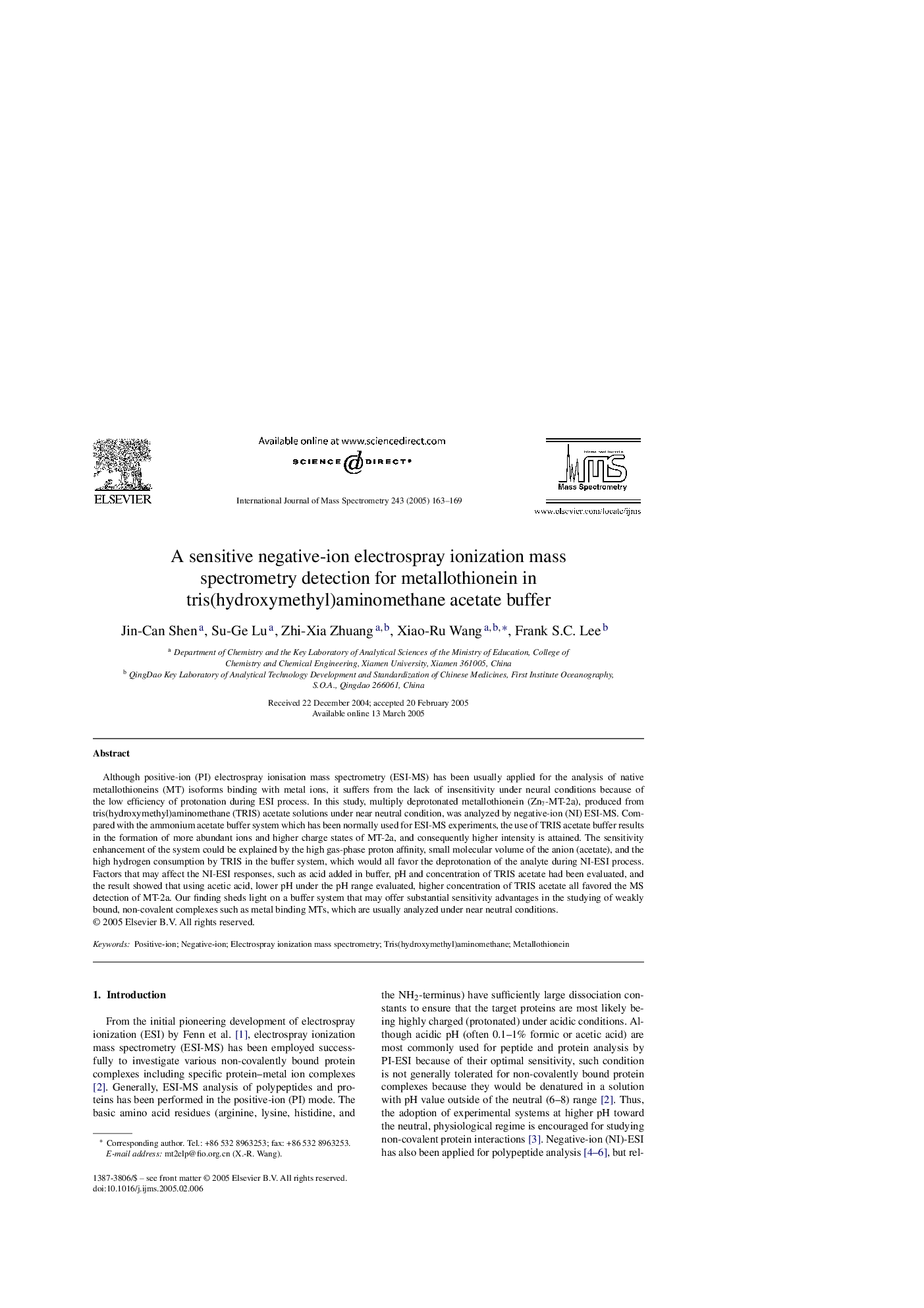| Article ID | Journal | Published Year | Pages | File Type |
|---|---|---|---|---|
| 9746689 | International Journal of Mass Spectrometry | 2005 | 7 Pages |
Abstract
Although positive-ion (PI) electrospray ionisation mass spectrometry (ESI-MS) has been usually applied for the analysis of native metallothioneins (MT) isoforms binding with metal ions, it suffers from the lack of insensitivity under neural conditions because of the low efficiency of protonation during ESI process. In this study, multiply deprotonated metallothionein (Zn7-MT-2a), produced from tris(hydroxymethyl)aminomethane (TRIS) acetate solutions under near neutral condition, was analyzed by negative-ion (NI) ESI-MS. Compared with the ammonium acetate buffer system which has been normally used for ESI-MS experiments, the use of TRIS acetate buffer results in the formation of more abundant ions and higher charge states of MT-2a, and consequently higher intensity is attained. The sensitivity enhancement of the system could be explained by the high gas-phase proton affinity, small molecular volume of the anion (acetate), and the high hydrogen consumption by TRIS in the buffer system, which would all favor the deprotonation of the analyte during NI-ESI process. Factors that may affect the NI-ESI responses, such as acid added in buffer, pH and concentration of TRIS acetate had been evaluated, and the result showed that using acetic acid, lower pH under the pH range evaluated, higher concentration of TRIS acetate all favored the MS detection of MT-2a. Our finding sheds light on a buffer system that may offer substantial sensitivity advantages in the studying of weakly bound, non-covalent complexes such as metal binding MTs, which are usually analyzed under near neutral conditions.
Related Topics
Physical Sciences and Engineering
Chemistry
Analytical Chemistry
Authors
Jin-Can Shen, Su-Ge Lu, Zhi-Xia Zhuang, Xiao-Ru Wang, Frank S.C. Lee,
